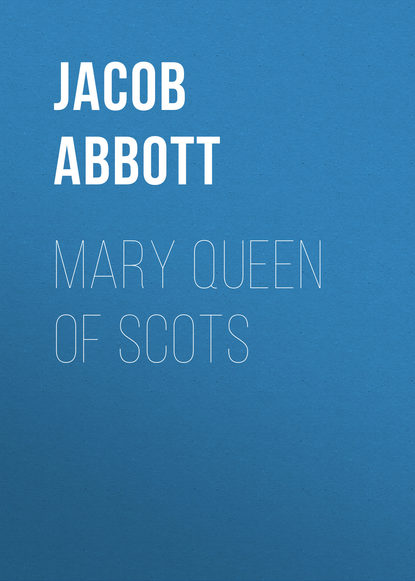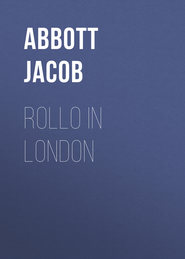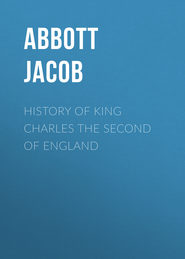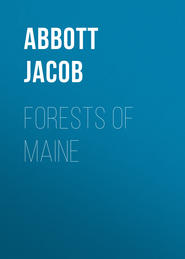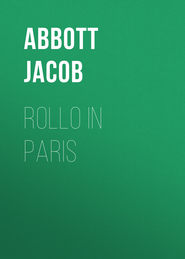По всем вопросам обращайтесь на: info@litportal.ru
(©) 2003-2024.
✖
Mary Queen of Scots
Настройки чтения
Размер шрифта
Высота строк
Поля
And yet Mary was at first very much pleased with Queen Catharine, and was accustomed to look up to her with great admiration, and to feel for her a very sincere regard. She often went into the queen's apartments, where they sat together and talked, or worked upon their embroidery, which was a famous amusement for ladies of exalted rank in those days. Mary herself at one time worked a large piece, which she sent as a present to the nuns in the convent where she had resided; and afterward, in Scotland, she worked a great many things, some of which still remain, and may be seen in her ancient rooms in the palace of Holyrood House. She learned this art by working with Queen Catharine in her apartments. When she first became acquainted with Catharine on these occasions, she used to love her society. She admired her talents and her conversational powers, and she liked very much to be in her room. She listened to all she said, watched her movements, and endeavored in all things to follow her example.
The latter suspicious.
Catharine, however, thought that this was all a pretense, and that Mary did not really like her, but only wished to make her believe that she did so in order to get favor, or to accomplish some other selfish end. One day she asked her why she seemed to prefer her society to that of her youthful and more suitable companions. Mary replied, in substance, "The reason was, that though with them she might enjoy much, she could learn nothing; while she always learned from Queen Catharine's conversation something which would be of use to her as a guide in future life." One would have thought that this answer would have pleased the queen, but it did not. She did not believe that it was sincere.
Unguarded remark
Catharine's mortification.
On one occasion Mary seriously offended the queen by a remark which she made, and which was, at least, incautious. Kings and queens, and, in fact, all great people in Europe, pride themselves very much upon the antiquity of the line from which they have descended. Now the family of Queen Catharine had risen to rank and distinction within a moderate period; and though she was, as Queen of France, on the very pinnacle of human greatness, she would naturally be vexed at any remark which would remind her of the recentness of her elevation. Now Mary at one time said, in conversation in the presence of Queen Catharine, that she herself was the descendant of a hundred kings. This was perhaps true, but it brought her into direct comparison with Catharine in a point in which the latter was greatly her inferior, and it vexed and mortified Catharine very much to have such a thing said to her by such a child.
The dauphin.
Origin of the title.
Mary associated thus during all this time, not only with the queen and the princesses, but also with the little prince whom she was destined to marry. His name was Francis, but he was commonly called the dauphin, which was the name by which the oldest son of the King of France was then, and has been since designated. The origin of this custom was this. About a hundred years before the time of which we are speaking, a certain nobleman of high rank, who possessed estates in an ancient province of France called Dauphiny, lost his son and heir. He was overwhelmed with affliction at the loss, and finally bequeathed all his estates to the king and his successors, on condition that the oldest son should bear the title of Dauphin. The grant was accepted, and the oldest son was accordingly so styled from that time forward, from generation to generation.
Character of Francis.
The dauphin, Francis, was a weak and feeble child, but he was amiable and gentle in his manners, and Mary liked him. She met him often in their walks and rides, and she danced with him at the balls and parties given for her amusement. She knew that he was to be her husband as soon as she was old enough to be married, and he knew that she was to be his wife. It was all decided, and nothing which either of them could say or do would have any influence on the result. Neither of them, however, seem to have had any desire to change the result. Mary pitied Francis on account of his feeble health, and liked his amiable and gentle disposition; and Francis could not help loving Mary, both on account of the traits of her character and her personal charms.
Mary's beauty.
Torch-light procession.
An angel.
As Mary advanced in years, she grew very beautiful. In some of the great processions and ceremonies, the ladies were accustomed to walk, magnificently dressed and carrying torches in their hands. In one of these processions Mary was moving along with the rest, through a crowd of spectators, and the light from her torch fell upon her features and upon her hair in such a manner as to make her appear more beautiful than usual. A woman, standing there, pressed up nearer to her to view her more closely, and, seeing how beautiful she was, asked her if she was not an angel. In those days, however, people believed in what is miraculous and supernatural more easily than now, so that it was not very surprising that one should think, in such a case, that an angel from Heaven had come down to join in the procession.
Mary a Catholic.
Her conscientiousness and fidelity.
Mary grew up a Catholic, of course: all were Catholics around her. The king and all the royal family were devoted to Catholic observances. The convent, the ceremonies, the daily religious observances enjoined upon her, the splendid churches which she frequented, all tended in their influence to lead her mind away from the Protestant religion which prevailed in her native land, and to make her a Catholic: she remained so throughout her life. There is no doubt that she was conscientious in her attachment to the forms and to the spirit of the Roman Church. At any rate, she was faithful to the ties which her early education imposed upon her, and this fidelity became afterward the source of some of her heaviest calamities and woes.
Chapter III
The Great Wedding
1558
Hastening the wedding.
Reasons for it.
When Mary was about fifteen years of age, the King of France began to think that it was time for her to be married. It is true that she was still very young, but there were strong reasons for having the marriage take place at the earliest possible period, for fear that something might occur to prevent its consummation at all. In fact, there were very strong parties opposed to it altogether. The whole Protestant interest in Scotland were opposed to it, and were continually contriving plans to defeat it. They thought that if Mary married a French prince, who was, of course, a Catholic, she would become wedded to the Catholic interest hopelessly and forever. This made them feel a most bitter and determined opposition to the plan.
Attempt to poison Mary.
In fact, so bitter and relentless were the animosities that grew out of this question, that an attempt was actually made to poison Mary. The man who committed this crime was an archer in the king's guard: he was a Scotch man, and his name was Stewart. His attempt was discovered in time to prevent the accomplishment of his purpose. He was tried and condemned. They made every effort to induce him to explain the reason which led him to such an act, or, if he was employed by others, to reveal their names; but he would reveal nothing. He was executed for his crime, leaving mankind to conjecture that his motive, or that of the persons who instigated him to the deed, was a desperate determination to save Scotland, at all hazards, from falling under the influence of papal power.
The Guises.
Catharine's jealousy.
Mary's mother, the queen dowager of Scotland, was of a celebrated French family, called the family of Guise. She is often, herself, called in history, Mary of Guise. There were other great families in France who were very jealous of the Guises, and envious of their influence and power. They opposed Queen Mary's marriage to the dauphin, and were ready to do all in their power to thwart and defeat it. Queen Catharine, too, who seemed to feel a greater and greater degree of envy and jealousy against Mary as she saw her increasing in grace, beauty, and influence with her advancing years, was supposed to be averse to the marriage. Mary was, in some sense, her rival, and she could not bear to have her become the wife of her son.
Commissioners from Scotland.
Preliminaries.
King Henry, finding all these opposing influences at work, thought that the safest plan would be to have the marriage carried into effect at the earliest possible period. When, therefore, Mary was about fifteen years of age, which was in 1557, he sent to Scotland, asking the government there to appoint some commissioners to come to France to assent to the marriage contracts, and to witness the ceremonies of the betrothment and the wedding. The marriage contracts, in the case of the union of a queen of one country with a prince of another, are documents of very high importance. It is considered necessary not only to make very formal provision for the personal welfare and comfort of the wife during her married life, and during her widowhood in case of the death of her husband, but also to settle beforehand the questions of succession which might arise out of the marriage, and to define precisely the rights and powers both of the husband and the wife, in the two countries to which they respectively belong.
Stipulations.
The Parliament of Scotland appointed a number of commissioners, of the highest rank and station, to proceed to France, and to act there as the representatives of Scotland in every thing which pertained to the marriage. They charged them to guard well the rights and powers of Mary, to see that these rights and all the interests of Scotland were well protected in the marriage contracts, and to secure proper provision for the personal comfort and happiness of the queen. The number of these commissioners was eight. Their departure from Scotland was an event of great public importance. They were accompanied by a large number of attendants and followers, who were eager to be present in Paris at the marriage festivities. The whole company arrived safely at Paris, and were received with every possible mark of distinction and honor.
Plan of Henry to evade them.
Marriage settlement.
The marriage contracts were drawn up, and executed with great formality. King Henry made no objection to any of the stipulations and provisions which the commissioners required, for he had a secret plan for evading them all. Very ample provision was made for Mary herself. She was to have a very large income. In case the dauphin died while he was dauphin, leaving Mary a widow, she was still to have a large income paid to her by the French government as long as she lived, whether she remained in France or went back to Scotland. If her husband outlived his father, so as to become King of France, and then died, leaving Mary his widow, her income for the rest of her life was to be double what it would have been if he had died while dauphin. Francis was, in the mean time, to share with her the government of Scotland. If they had a son, he was to be, after their deaths, King of France and of Scotland too. Thus the two crowns would have been united. If, on the other hand, they had only daughters, the oldest one was to be Queen of Scotland only, as the laws of France did not allow a female to inherit the throne. In case they had no children, the crown of Scotland was not to come into the French family at all, but to descend regularly to the next Scotch heir.
Secret papers.
Their contents.
Henry was not satisfied with this entirely, for he wanted to secure the union of the Scotch and French crowns at all events, whether Mary had children or not; and he persuaded Mary to sign some papers with him privately, which he thought would secure his purposes, charging her not to let the commissioners know that she had signed them. He thought it possible that he should never have occasion to produce them. One of these papers conveyed the crown of Scotland to the King of France absolutely and forever, in case Mary should die without children. Another provided that the Scotch government should repay him for the enormous sums he had expended upon Mary during her residence in France, for her education, her attendants, the celebrations and galas which he had provided for her, and all the splendid journeys, processions, and parades. His motive in all this expense had been to unite the crown of Scotland to that of France, and he wished to provide that if any thing should occur to prevent the execution of his plan, he could have all this money reimbursed to him again. He estimated the amount at a million of pieces of gold. This was an enormous sum: it shows on how magnificent a scale Mary's reception and entertainment in France were managed.
Ceremonies.
These preliminary proceedings being settled, all Paris, and, in fact, all France, began to prepare for the marriage celebrations. There were to be two great ceremonies connected with the occasion. The first was the betrothment, the second was the marriage. At the betrothment Francis and Mary were to meet in a great public hall, and there, in the presence of a small and select assemblage of the lords and ladies of the court, and persons of distinction connected with the royal family, they were formally and solemnly to engage themselves to each other. Then, in about a week afterward, they were to be married, in the most public manner, in the great Cathedral Church of Notre Dame.
The betrothal.
The Louvre.
The ceremony of the betrothal was celebrated in the palace. The palace then occupied by the royal family was the Louvre. It still stands, but is no longer a royal dwelling. Another palace, more modern in its structure, and called the Tuilleries, has since been built, a little farther from the heart of the city, and in a more pleasant situation. The Louvre is square, with an open court in the center. This open court or area is very large, and is paved like the streets. In fact, two great carriage ways pass through it, crossing each other at right angles in the center, and passing out under great arch-ways in the four sides of the building. There is a large hall within the palace, and in this hall the ceremony of the betrothal took place. Francis and Mary pledged their faith to each other with appropriate ceremonies. Only a select circle of relations and intimate friends were present on this occasion. The ceremony was concluded in the evening with a ball.
Notre Dame.
View of the interior.
In the mean time, all Paris was busy with preparations for the marriage. The Louvre is upon one side of the River Seine, its principal front being toward the river, with a broad street between. There are no buildings, but only a parapet wall on the river side of the street, so that there is a fine view of the river and of the bridges which cross it, from the palace windows. Nearly opposite the Louvre is an island, covered with edifices, and connected, by means of bridges, with either shore. The great church of Notre Dame, where the marriage ceremony was to be performed, is upon this island. It has two enormous square towers in front, which may be seen, rising above all the roofs of the city, at a great distance in every direction. Before the church is a large open area, where vast crowds assemble on any great occasion. The interior of the church impresses the mind with the sublimest emotions. Two rows of enormous columns rise to a great height on either hand, supporting the lofty arches of the roof. The floor is paved with great flat stones, and resounds continually with the footsteps of visitors, who walk to and fro, up and down the aisles, looking at the chapels, the monuments, the sculptures, the paintings, and the antique and grotesque images and carvings. Colored light streams through the stained glass of the enormous windows, and the tones of the organ, and the voices of the priests, chanting the service of the mass, are almost always resounding and echoing from the vaulted roof above.
Amphitheater.
Covered gallery.





